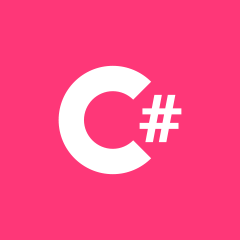如何从 ASP.NET MVC 中的嵌套 json 结果读取值
我成功地从这个简单的 json 中得到了结果,并使用以下代码显示在视图中。
物种控制器.cs
using diversity.Models;
using System;
using System.Collections.Generic;
using System.Linq;
using System.Web;
using System.Web.Mvc;
using LinqToWiki.Download;
using LinqToWiki.Generated;
using LinqToWiki;
using System.Text;
using RestSharp;
using Newtonsoft.Json.Linq;
using System.Net.Http;
using Newtonsoft.Json;
namespace diversity.Controllers
{
public class SpeciesController : Controller
{
public async System.Threading.Tasks.Task<ActionResult> SpeciesDetails(){
HttpClient client = new HttpClient();
List<Species> datalist = new List<Species>();
try
{
HttpResponseMessage response = await client.GetAsync("https://jsonplaceholder.typicode.com/posts/1");
response.EnsureSuccessStatusCode();
string responseBody = await response.Content.ReadAsStringAsync();
datalist = JsonConvert.DeserializeObject<List<Species>>(responseBody);
}
catch (HttpRequestException e)
{
System.Diagnostics.Debug.WriteLine("\nException Caught!");
System.Diagnostics.Debug.WriteLine("Message :{0} ", e.Message);
}
client.Dispose();
return View(datalist);
}
}
}
物种.cs
using System;
using System.Collections.Generic;
using System.Linq;
using System.Web;
namespace diversity.Models
{
public class Species
{
public int UserId { get; set; }
public int Id { get; set; }
public string Title { get; set; }
public string Body { get; set; }
}
}
物种详情.cshtml
@model IEnumerable<diversity.Models.Species>
@{
ViewBag.Title = "SpeciesDetails";
Layout = "~/Views/Shared/_Layout.cshtml";
}
<h2>SpeciesDetails</h2>
<p>
@Html.ActionLink("Create New", "Create")
</p>
<table class="table">
<tr>
<th>
@Html.DisplayNameFor(model => model.UserId)
</th>
<th>
@Html.DisplayNameFor(model => model.Title)
</th>
<th>
@Html.DisplayNameFor(model => model.Body)
</th>
<th></th>
</tr>
 哔哔one
哔哔one2回答
-

撒科打诨
将此用作您的模型类: using System.Collections.Generic; using Newtonsoft.Json; public partial class JsonModel { [JsonProperty("offset")] public long Offset { get; set; } [JsonProperty("limit")] public long Limit { get; set; } [JsonProperty("endOfRecords")] public bool EndOfRecords { get; set; } [JsonProperty("count")] public long Count { get; set; } [JsonProperty("results")] public List<Result> Results { get; set; } } public partial class Result { [JsonProperty("key")] public long Key { get; set; } [JsonProperty("datasetKey")] public string DatasetKey { get; set; } [JsonProperty("nubKey")] public long NubKey { get; set; } [JsonProperty("parentKey")] public long ParentKey { get; set; } [JsonProperty("parent")] public string Parent { get; set; } [JsonProperty("kingdom")] public string Kingdom { get; set; } [JsonProperty("phylum")] public string Phylum { get; set; } [JsonProperty("order")] public string Order { get; set; } [JsonProperty("family")] public string Family { get; set; } [JsonProperty("genus")] public string Genus { get; set; } [JsonProperty("kingdomKey")] public long KingdomKey { get; set; } [JsonProperty("phylumKey")] public long PhylumKey { get; set; } [JsonProperty("classKey")] public long ClassKey { get; set; } [JsonProperty("orderKey")] public long OrderKey { get; set; } [JsonProperty("familyKey")] public long FamilyKey { get; set; } [JsonProperty("genusKey")] public long GenusKey { get; set; } [JsonProperty("scientificName")] public string ScientificName { get; set; } [JsonProperty("canonicalName")] public string CanonicalName { get; set; } [JsonProperty("authorship")] public string Authorship { get; set; } [JsonProperty("nameType")] public string NameType { get; set; } [JsonProperty("taxonomicStatus")] public string TaxonomicStatus { get; set; } [JsonProperty("rank")] public string Rank { get; set; } [JsonProperty("origin")] public string Origin { get; set; } [JsonProperty("numDescendants")] public long NumDescendants { get; set; } [JsonProperty("numOccurrences")] public long NumOccurrences { get; set; } [JsonProperty("habitats")] public List<object> Habitats { get; set; } [JsonProperty("nomenclaturalStatus")] public List<object> NomenclaturalStatus { get; set; } [JsonProperty("threatStatuses")] public List<object> ThreatStatuses { get; set; } [JsonProperty("descriptions")] public List<object> Descriptions { get; set; } [JsonProperty("vernacularNames")] public List<object> VernacularNames { get; set; } [JsonProperty("higherClassificationMap")] public Dictionary<string, string> HigherClassificationMap { get; set; } [JsonProperty("synonym")] public bool Synonym { get; set; } [JsonProperty("class")] public string Class { get; set; } }然后在你的课堂上做这个 var data = JsonConvert.DeserializeObject<JsonModel>("JsonData"); var result = data.Results;//Loop as appropriate, using index 0 for testing string AuthorShip = result[0].Authorship; string Origin = result[0].Origin; string parent = result[0].Parent;
 随时随地看视频慕课网APP
随时随地看视频慕课网APP
相关分类

 C#
C#